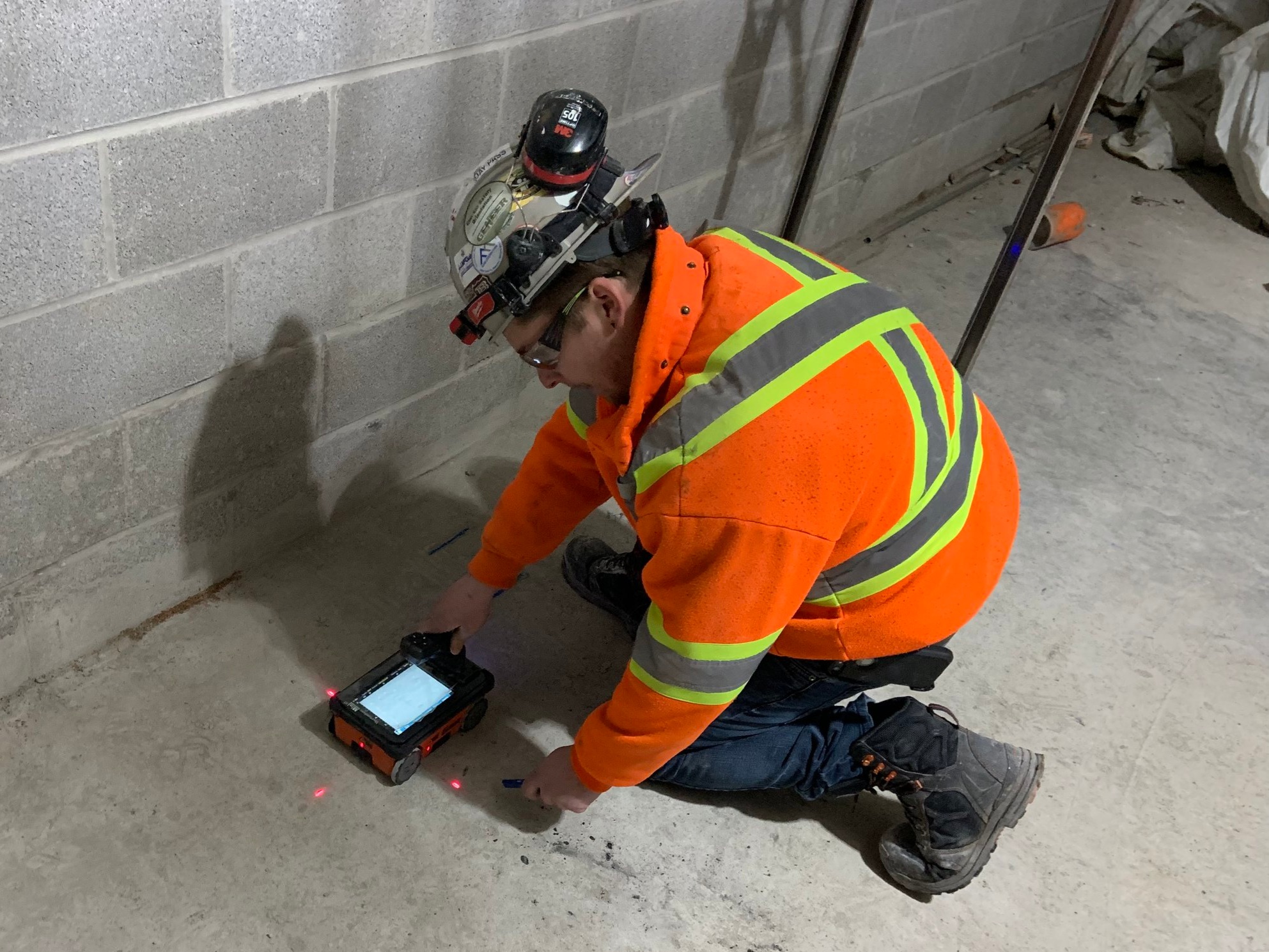Exploring the Depths: A Comprehensive Guide to Concrete Scanning and Its Diverse Applications
In the realm of building and construction and framework advancement, the meticulous procedure of concrete scanning holds an essential role in ensuring the architectural integrity and safety and security of jobs. As innovation continues to develop, the applications of concrete scanning have increased much past mere surface-level evaluations. From spotting rebar and post-tension cables to mapping out channels and spaces hidden within concrete frameworks, the capacities of modern-day scanning methods are both excellent and important. Nevertheless, the true depth of concrete scanning's possible reaches even better, branching into unanticipated industries and sparking ingenious remedies. The interconnected web of opportunities that concrete scanning offers is not just fascinating but likewise crucial for the innovation of various markets.
Importance of Concrete Scanning
Comprehending the importance of concrete scanning is essential in ensuring the safety and security and honesty of structures during construction and renovation tasks. Concrete scanning makes use of sophisticated innovations such as ground-penetrating radar (GPR) and electromagnetic induction to spot embedded things, gaps, or various other abnormalities within concrete structures.
Additionally, concrete scanning plays an essential role in making sure conformity with building regulations and policies that mandate the protection of existing architectural parts throughout building and construction tasks. By accurately drawing up the interior composition of concrete, scanning innovations make it possible for building and construction professionals to make educated decisions that maintain the architectural stability and sturdiness of structures and framework projects. In significance, the importance of concrete scanning depends on its capability to safeguard both the architectural honesty and the personnel associated with building and construction endeavors.
Technologies Utilized in Concrete Scanning
Concrete scanning relies on advanced innovations such as ground-penetrating radar (GPR) and electro-magnetic induction to precisely find ingrained items and abnormalities within concrete frameworks. Ground-penetrating radar runs by producing high-frequency electromagnetic waves right into the concrete.
Electro-magnetic induction, on the various other hand, functions by producing electro-magnetic areas around a concrete structure through a transmitter coil. When metal things are existing within the concrete, they disrupt these electro-magnetic areas, causing eddy currents to stream via the metal. By measuring the changes in the magnetic fields with a receiver coil, the system can pinpoint the location of metallic things in the concrete.
These advanced modern technologies play a vital duty in non-destructive screening, ensuring the safety and security and stability of concrete frameworks in different industries.
Applications in Construction Sector
Within the building and construction market, concrete scanning innovation discovers diverse applications that improve job effectiveness and security. Furthermore, concrete scanning is used for finding spaces, such as air pockets or locations of degeneration within concrete, which can endanger the overall stamina of a framework. Concrete scanning plays a crucial role in quality control by verifying the thickness of concrete covers over support, making certain conformity with layout requirements and criteria.

Safety And Security Advantages of Concrete Scanning
In the world of building safety and security, the application of concrete scanning modern technology provides an extremely important benefit in preemptively identifying prospective risks and strengthening structural integrity. By utilizing sophisticated scanning methods such as ground-penetrating radar (GPR) and electromagnetic induction, building and construction teams can properly find rebar, post-tension see this wires, avenues, and various other hidden things within concrete frameworks. This aggressive approach considerably minimizes the danger of unintentional strikes during boring, cutting, or coring activities, therefore stopping pricey problems, injuries, and project delays.
In addition, concrete scanning boosts employee safety and security by providing real-time information regarding the structural problem of concrete components. This information allows building and construction experts to examine the stability of existing structures, identify deterioration or defects, and make informed choices regarding repair and maintenance procedures. By addressing prospective security worries quickly, concrete scanning contributes to creating a safe working environment and minimizing the chance of architectural failings or mishaps on construction websites. Eventually, the safety advantages of concrete scanning not only guard lives and assets however additionally maintain sector requirements have a peek at this site for top quality and dependability.
Future Patterns in Concrete Scanning
Emerging innovations in scanning technology are positioned to change the field of concrete assessment and analysis. By taking advantage of the power of AI, these systems can analyze huge quantities of information gathered during scanning procedures to supply more comprehensive and precise understandings right into the condition of concrete frameworks.
Another considerable trend is the growth of even more easy to use and mobile scanning tools. Miniaturization of scanning devices enables easier access to restricted rooms and remote locations, making evaluations a lot more reliable and thorough. Additionally, advancements in wireless interaction innovations allow real-time data transfer and evaluation, helping with quicker decision-making processes.
In addition, there is an expanding emphasis on sustainability in concrete scanning technologies - RainierGPR Concrete Scanning. Makers are increasingly incorporating eco-friendly products and energy-efficient functions into their tools to minimize environmental influence. These future patterns are readied to boost the efficiency, accuracy, and sustainability of concrete scanning techniques, shaping the industry's future landscape
Verdict
Finally, concrete scanning plays a critical function in the construction industry by ensuring the safety and security and performance of numerous projects. By using sophisticated modern technologies, such as look what i found GPR and radar imaging, specialists are able to properly spot prospective dangers within concrete frameworks. The applications of concrete scanning are vast and continue to advance, making it a vital tool for preserving the integrity of buildings and framework. As innovation advances, the future of concrete scanning holds encouraging advancements for improving construction procedures.

Comments on “The Ultimate RainierGPR Concrete Scanning Solution Discussed”